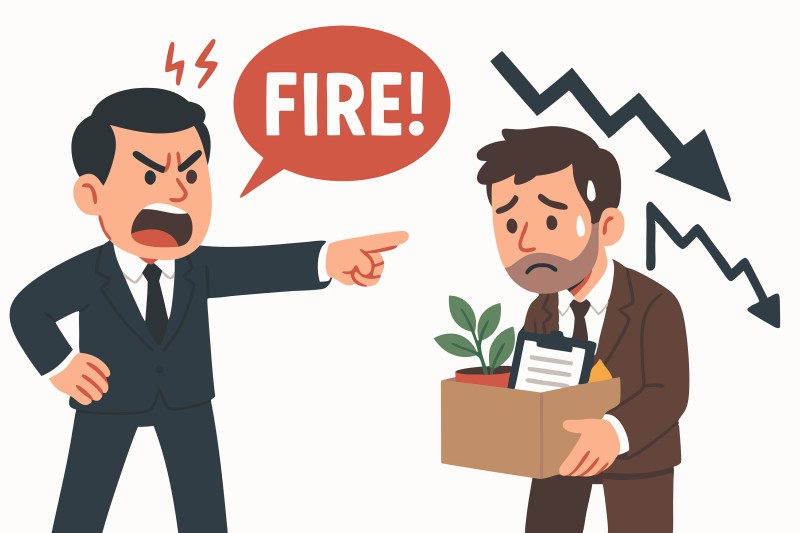
What is Constructive Dismissal
Many employers ask me: what is constructive dismissal, and how can we avoid claims? I’m John Bloor from EBS Law, and in this article I explain what constructive dismissal means in practice, the risks it creates for businesses, and how employers can reduce their exposure to costly tribunal claims.
Understanding constructive dismissal
Constructive dismissal occurs when an employee resigns because they believe their employer has fundamentally breached their contract of employment. The breach must be serious enough to justify resignation, and the employee must leave in response to it. Even though the employee resigns, the law treats this as dismissal by the employer.
Examples of breaches leading to constructive dismissal
Employers may face claims where they:
- Fail to pay wages or reduce pay without agreement
- Change duties or hours significantly without consultation
- Ignore grievances or subject employees to bullying
- Breach trust and confidence through unfair treatment
- Create an unsafe or intolerable working environment
Employees must usually have at least two years’ service to claim constructive dismissal, though claims linked to discrimination or whistleblowing can be made without this service requirement.
What is constructive dismissal in legal terms?
In legal terms, constructive dismissal requires three elements:
- A fundamental breach of contract by the employer
- The employee resigns because of that breach
- The resignation is timely and clearly linked to the breach
If all three are satisfied, an employment tribunal may find that dismissal has taken place, even though the employee resigned.
Employer duties and implied contract terms
Every contract of employment includes an implied duty of mutual trust and confidence. Employers must not, without reasonable cause, act in a way likely to destroy that trust. Constructive dismissal claims often rely on this implied term. For example, unfairly criticising an employee, excluding them from meetings, or ignoring complaints may amount to a breach.
Why constructive dismissal claims matter to employers
Constructive dismissal claims can be costly. Employees can seek a basic award and a compensatory award for financial losses, similar to unfair dismissal. Compensation is capped at the lower of one year’s gross pay or the statutory maximum, unless the claim also involves discrimination or whistleblowing. In those cases, awards are uncapped. The reputational damage of losing a claim can also be significant.
If you would like free advice, John Bloor and the team are here to help. Call John today on 874400 or email enquiries@ebslaw.co.uk for tailored support.
How employees prove constructive dismissal
Employees must show that the employer’s actions breached their contract and that they resigned in direct response. They cannot delay resignation for too long, as this may suggest acceptance of the breach. Tribunals will examine the evidence carefully, including grievance records, communications, and witness statements.
What is risk for employers?
Employers face risk when managers act unfairly, when policies are not applied consistently, or when employee complaints are ignored. Even a series of smaller breaches can add up to a “last straw” that justifies resignation. For example, repeated failures to address bullying complaints may result in a claim. Employers who fail to act reasonably and transparently expose themselves to tribunal risk.
Reducing the risk of constructive dismissal claims
Employers can reduce risk by:
- Having clear policies for grievance, discipline, and performance management
- Training managers to act fairly and follow procedures
- Investigating complaints thoroughly and promptly
- Consulting with employees before making significant changes
- Communicating decisions openly and respectfully
Prevention is always more effective than defending a claim after the fact.
Handling grievances: what is risk management?
Grievances are often the first warning sign of potential claims. Employers must investigate grievances properly and respond in line with the ACAS Code. Failure to do so can increase compensation by up to 25%. More guidance is available on the gov.uk: unfair dismissal guidance.
Checklist for employers
To protect your business, check whether:
- Managers understand what is constructive dismissal and the risks involved
- You have up-to-date policies for grievances and disciplinary action
- Decisions about pay, hours, or duties are consulted on and documented
- Complaints are investigated promptly and objectively
- Employees are treated consistently and fairly across the business
Dealing with constructive dismissal claims
If an employee resigns and alleges constructive dismissal, act quickly. Gather all evidence, review policies, and seek legal advice. Early settlement may be appropriate in some cases, especially if risks are high. However, if the claim is weak, defending it robustly can deter future opportunistic claims. Each case requires careful evaluation.
Training and culture
Policies alone are not enough. Employers should invest in manager training and build a culture of respect. Constructive dismissal claims often arise when staff feel ignored or undervalued. By promoting open communication and fairness, employers not only reduce risk but also improve retention and engagement.
Contact John Bloor today for expert support at EBS Law. We’re here to ensure your business stays protected every step of the way. Call 01625 874400 or email enquiries@ebslaw.co.uk.
You may also find these EBS Law resources helpful:
- Employee Dismissal: A Comprehensive Overview for Employers
- How to Dismiss an Employee
- Employers Tribunal Advice and Representation
Disclaimer: This article provides general information only and does not constitute legal advice. For tailored advice on your specific circumstances, please contact us directly.
